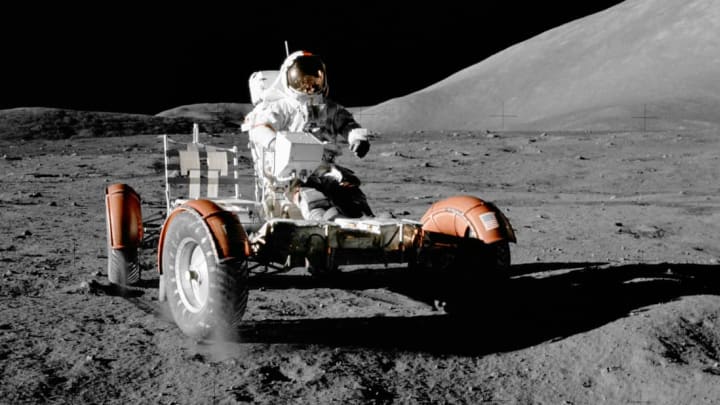Get The Details On All 21 Successful Moon Landings With This Interactive Map

In light of Apollo 11’s 50th anniversary this week, the world has focused on those historic first few steps on the Moon and everything that led up to them. But how much do you know about the 20 subsequent Moon landings? To fill you in, Smithsonian.com created an interactive map of the Moon with the who, what, where, when, and how of each successful lunar mission.
The map is color-coded: red for Russian Luna missions, green for China’s Chang'e 3 and Chang'e 4, and blue for the U.S.’s Apollo (marked with stars) and Surveyor missions (simple rings). You can click on each icon to expand a paragraph with a short summary of the mission and its notable accomplishments.
After Russia’s unmanned Luna 9 became the first craft to touch down on the Moon in 1966, 18 other triumphant landings followed in just a decade. The 20th didn’t happen until 37 years later, when China achieved its first landing with Chang'e 3 in 2013. The most recent occurred this past January, when China’s Chang'e 4 became the first spacecraft to land on the far side of the Moon. Chang'e 4 and its rover, Yutu 2, are still exploring the Moon as you read this, and China hopes to launch its follow-up mission, Chang'e 5, as early as this year.
Six Apollo missions landed humans on the Moon, and there haven’t been any actual astronauts on its surface since. But the 15 robotic landings have contributed to our lunar knowledge in a safer, more cost-efficient way. If you look at the map, you can see that most of the spacecrafts have landed near the Moon’s equator on the near side, where the terrain is mostly basaltic plains—the far side contains craters and even mountains. With more Chang'e missions to come from China, and NASA’s Artemis missions in the works, Smithsonian.com may soon have to create a 360° version of its map.
[h/t Smithsonian.com]